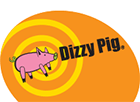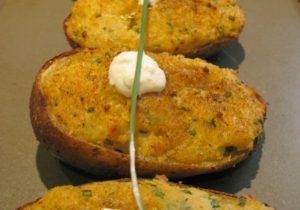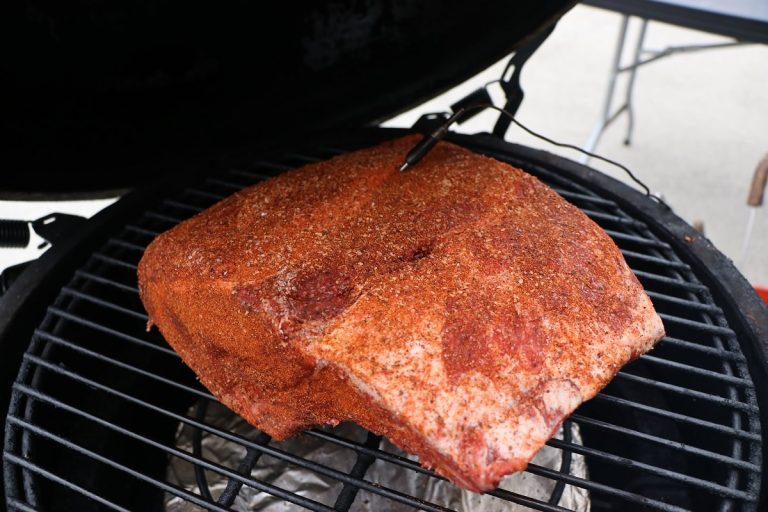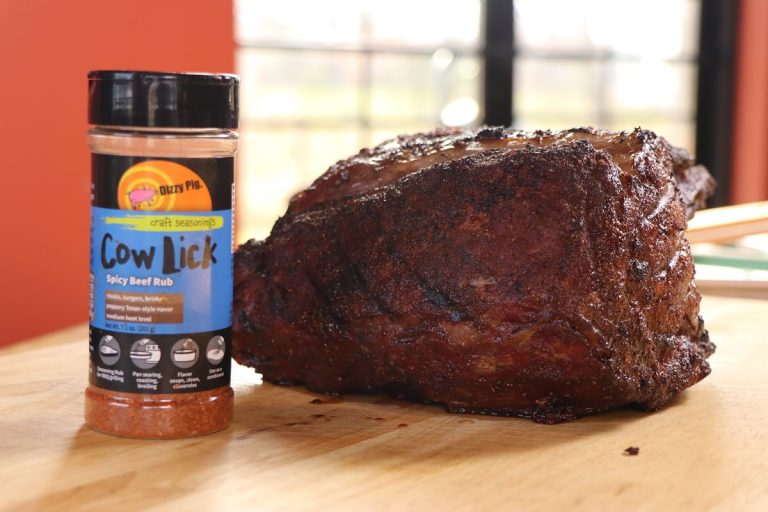5-4-3-2-1… Brisket ‘Chili’
Reverse Seared Smoke-Roasted Prime Rib (Ribeye Roast)

Whether you call it a Ribeye Roast, Standing Ribeye, or Prime Rib, it’s delicious if you build up a nice flavor crust and not overcook it. People almost always appreciate it when it’s served, and there are rarely leftovers.
There are many ways to cook Prime Rib, but we have settled on our favorite method which involves a slow roast and a hard sear at the end to develop that amazing flavor crust. We call it the “Reverse Sear”, and it produces an even color and doneness throughout, a mild smoke flavor (if you so desire) and an intense flavor crust to tie everything together. We cooked a 3-bone, nine-pound roast for this recipe, but boneless is also a great choice and provides more flavor crust than bone-in. Hard to go wrong either way.
If you have a larger roast, you may want to cut it in half before seasoning and cooking. Not only will you have more flavor crust, but you’ll be able to remove one if it is done earlier than the other.
We cooked this roast on the Big Green Egg, but this method can be applied to any grill that can be set up for indirect and direct cooking.
Ingredients
- 1 bone-in or boneless ribeye roast, 5-10 lbs
- Coarse salt
- Dizzy Pig Cow Lick steak seasoning to cover (Raising the Steaks, SPG Original, SPG Herb are also great options)
Directions
- Prepare cooker for indirect cooking
- Stabilize cooker at 275°F (wood chunks optional, we used 2 chunks of oak)
- Trim fat and membranes from roast as desired
- Apply salt to roast on all sides
- Apply Dizzy Pig Cow Lick seasoning to all sides and press in with your palms
- Insert probe thermometer into center of roast
- Place roast on cooker once the smoke is thin, clean and blue (and smells delicious)
- Cook until lowest temperature in roast is 110-115°F – our 9 lb roast took about 2.5 hours
- Remove and loosely tent in foil (we pulled ours off at 111°F, and during the 15 minute rest, the temperature rose to 118°F)
- Immediately set up cooker for direct cooking
- Add charcoal if necessary and get a good hot fire (500°F+)
- Sear roast on all sides – your fire should be hot enough to get a lightly charred flavor crust within 3-4 minutes per side
- Remove and rest for 10-20 minutes. After grilling and resting our roast for 15 minutes, the internal temperature reached 126°F – a perfect medium rare
- Slice and serve
Notes:
***If you want a shorter roasting time, you can cook at 300-325°F. The roast will be a little more done toward the outside, but it will still be delicious. When cooking at higher temperatures, you will want to pull the roast off at a lower internal temperature (like 110°F) because higher temps lead to more carryover cooking during the rest.
***Your ultimate goal when you slice the roast (after the rest) is to have a final internal temperature of 120-130°F for medium rare, or 130-135°F for medium
In This Recipe:
Related Blog Posts:
What Else is Cooking?
Step by Step

We cooked a 3-bone, nine-pound roast for this recipe, but boneless is also a great choice and provides more flavor crust than bone-in. Hard to go wrong either way. 
Trim fat and membranes from roast as desired 
Apply salt to roast on all sides 
Apply Dizzy Pig Cow Lick seasoning to all sides and press in with your palms 
Insert probe thermometer into center of roast and place roast on cooker once the smoke is thin, clean and blue (and smells delicious) 
Cook until lowest temperature in roast is 110-115°F 
Remove and loosely tent in foil (we pulled ours off at 111°F, and during the 15 minute rest, the temperature rose to 118°F) 
Sear roast on all sides – your fire should be hot enough to get a lightly charred flavor crust within 3-4 minutes per side 
Remove and rest for 10-20 minutes. After grilling and resting our roast for 15 minutes, the internal temperature reached 126°F – a perfect medium rare
Did you make this recipe?
If you made this, snap a pic and tag it with @dizzypigbbq. We’d love to see and share your creations!



















